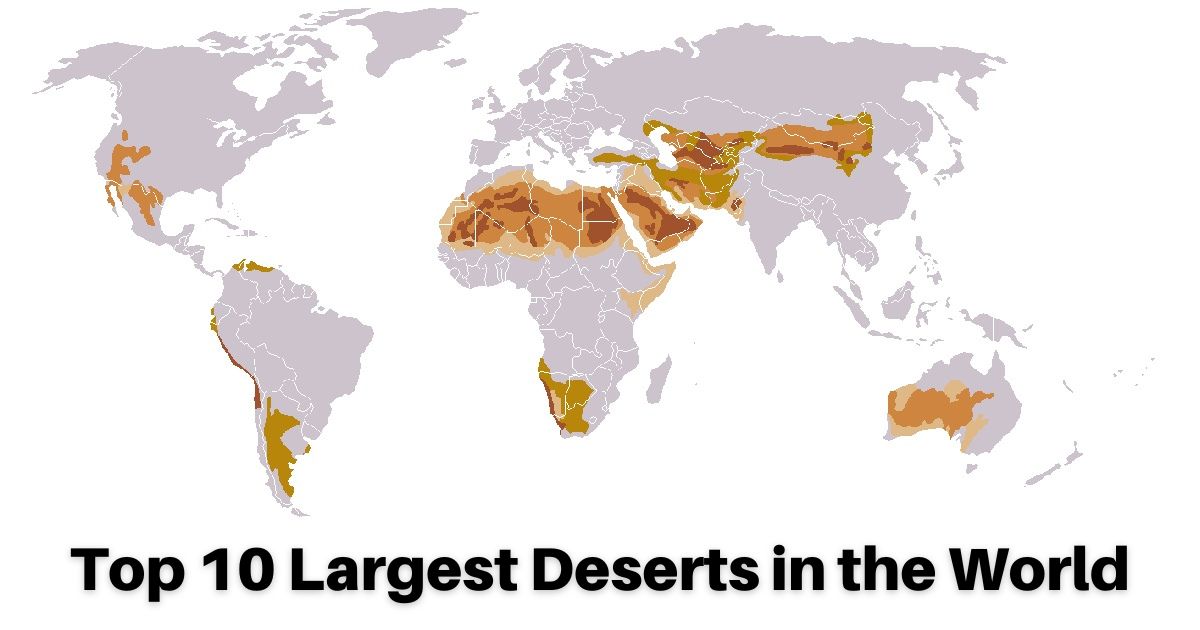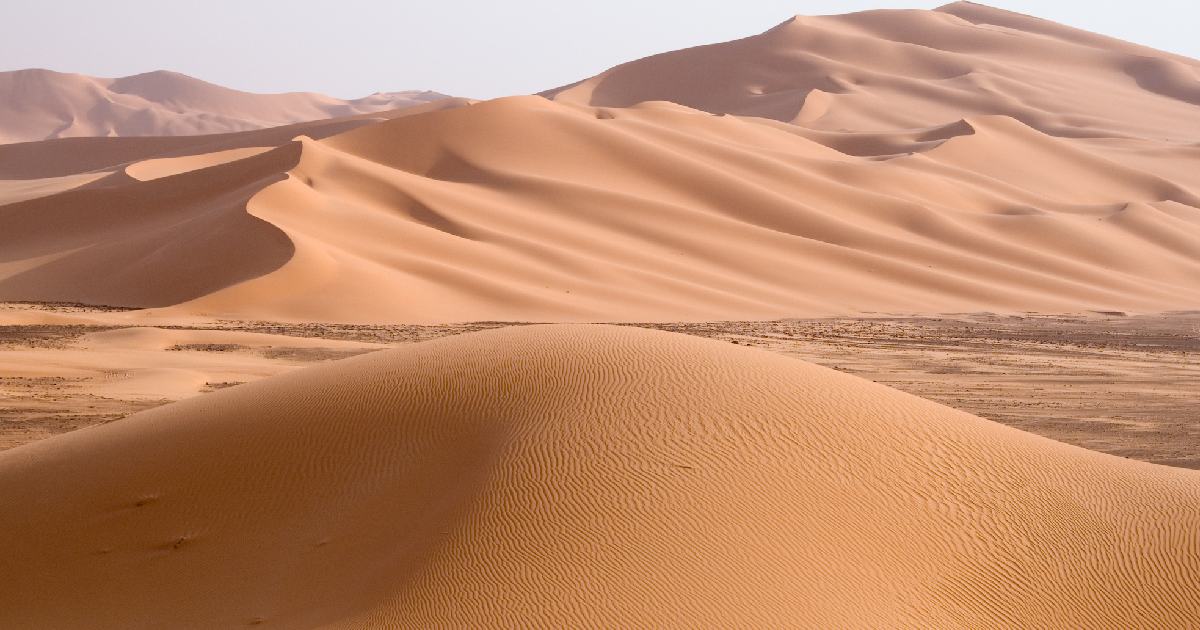
When you think of deserts, what springs to mind? Perhaps vast expanses of sand, towering dunes, and scorching sun. However, the largest deserts in the world encompass much more, from icy landscapes to rocky plateaus. These arid regions, each unique in their climates and ecosystems, occupy significant portions of our planet. This article will guide you through a journey across the globe, exploring the ten largest deserts, each a testament to the Earth’s diverse and stark beauty.
10. Great Basin Desert – North America’s Largest Desert
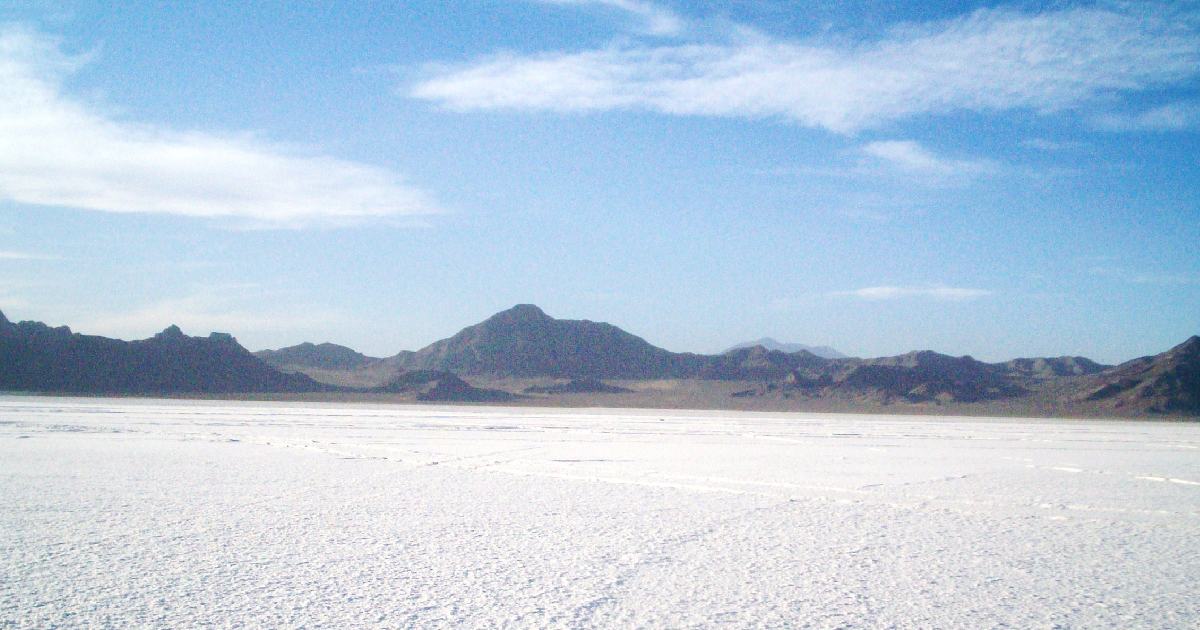
- Location: Western United States
- Area Size: 190,000 square miles
Rounding out our list is the Great Basin Desert in the western United States, covering 190,000 square miles. This cold desert features a mix of sagebrush and salt flats, bounded by the Sierra Nevada and Rocky Mountains. Its elevation varies greatly, influencing the local climate and giving rise to distinct ecological niches.
The Great Basin Desert is characterized by its basin and range topography, which includes numerous mountain ranges separated by flat basins. This topographical variety creates microclimates across the desert, supporting a surprisingly diverse range of life forms adapted to these niche environments. The area’s climate is significantly influenced by its elevation, which also affects the temperature and precipitation patterns throughout the desert.
9. Rubʿ al-Khali – The Empty Quarter of the Arabian Peninsula
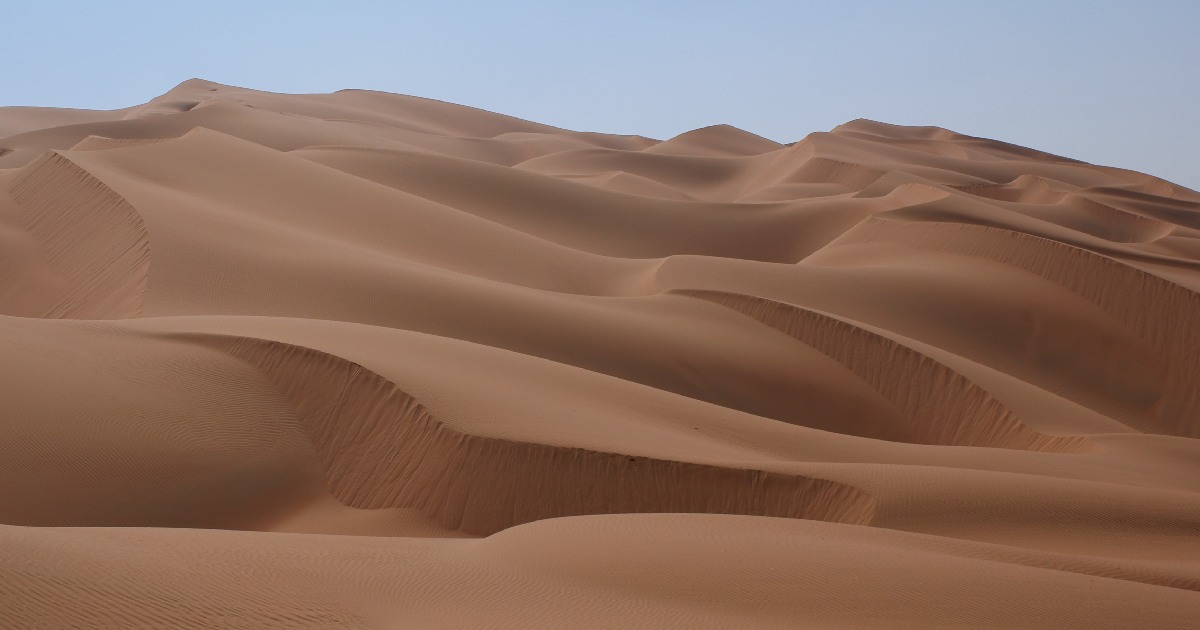
- Location: Southern Arabian Peninsula
- Area Size: 250,000 square miles
Also known as the Empty Quarter, the Rubʿ al-Khali desert encompasses 250,000 square miles of the southern Arabian Peninsula. This subtropical desert is the epitome of desolation with its vast, unbroken sand dunes, some of which are the tallest in the world. The extreme temperatures and lack of water make it one of the most inhospitable places on Earth.
Rubʿ al-Khali’s extreme aridity is due to both its geographical location in the subtropical ridge and the presence of cold offshore air currents that inhibit cloud formation. This desert contains some of the oldest and largest continuous sand bodies in the world, with dunes reaching up to 250 meters in height, driven by prevailing winds that shape their unique forms.
8. Great Victoria Desert – Australia’s Largest Desert
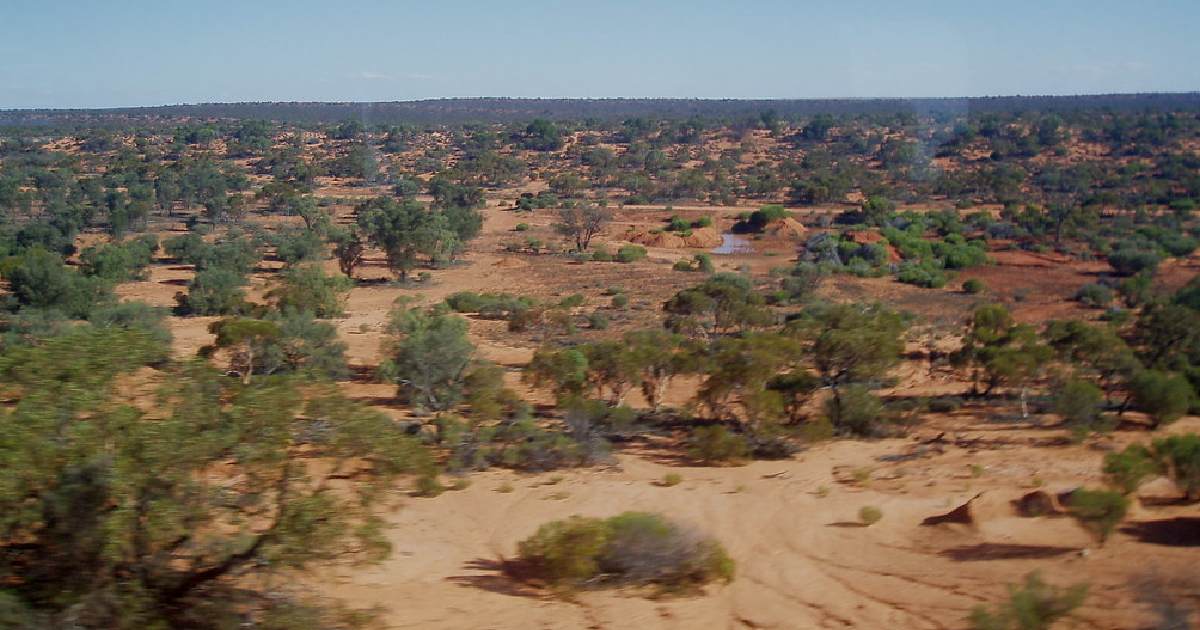
- Location: Western and South Australia
- Area Size: 250,000 square miles
Australia’s largest desert, the Great Victoria, covers 250,000 square miles across Western and South Australia. This subtropical desert features red sandy soil, small shrubs, and a variety of wildlife adapted to the arid conditions. The desert remains largely pristine, with indigenous communities maintaining a strong connection to the land.
The Great Victoria Desert features complex dune systems, salt lakes, and a unique biodiversity that has adapted to the extreme conditions. It has a largely unbroken ecological balance because of minimal human impact. This desert also plays a critical role in Australia’s climate, as it heats up during the day and influences atmospheric patterns across the continent.
7. Patagonian Desert – Argentina’s Cold Desert
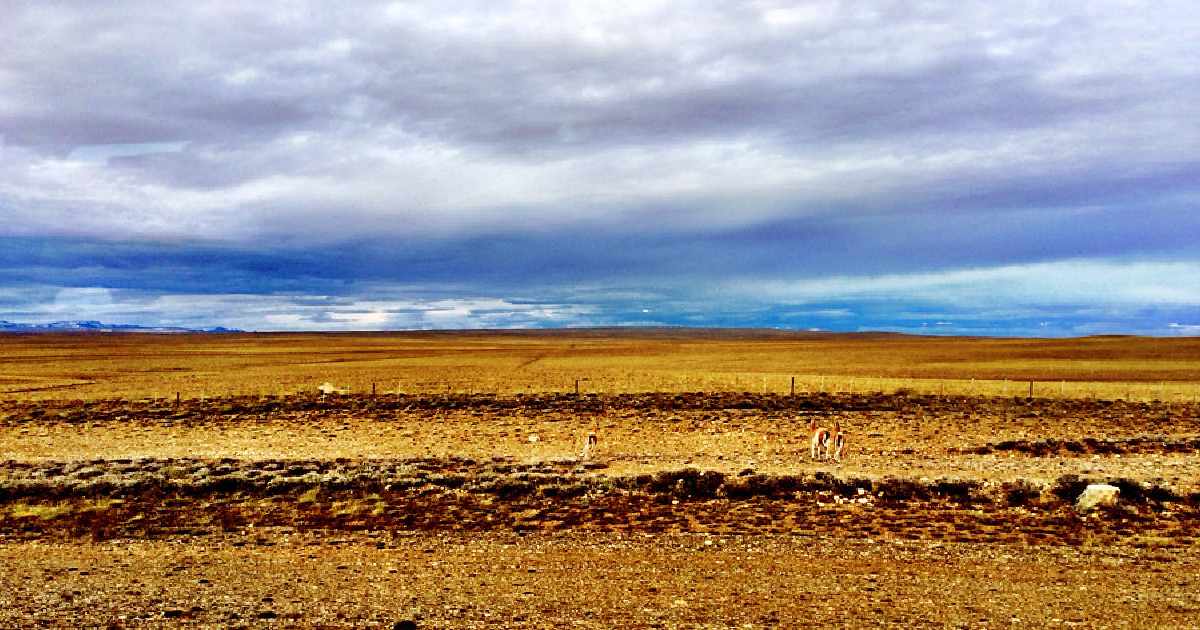
- Location: Southern Argentina
- Area Size: 260,000 square miles
The Patagonian Desert, or the Patagonian Steppe, spans 260,000 square miles in southern Argentina. It is primarily a cold desert, known for its arid, windy conditions, and sparse vegetation. The landscape is marked by plateaus and valleys, with occasional salt flats and oil reservoirs. Despite the harsh conditions, the Patagonian desert supports unique wildlife, including guanacos and rheas.
The Patagonian Desert, also known as the Monte, is primarily shaped by rain shadow effects and the cold offshore currents that chill the air and inhibit cloud formation. This region is also influenced by strong westerly winds, which contribute to its dryness by evaporating any moisture quickly and shaping its sparse, scrubby vegetation.
6. Kalahari Desert – The Subtropical Wilderness of Southern Africa
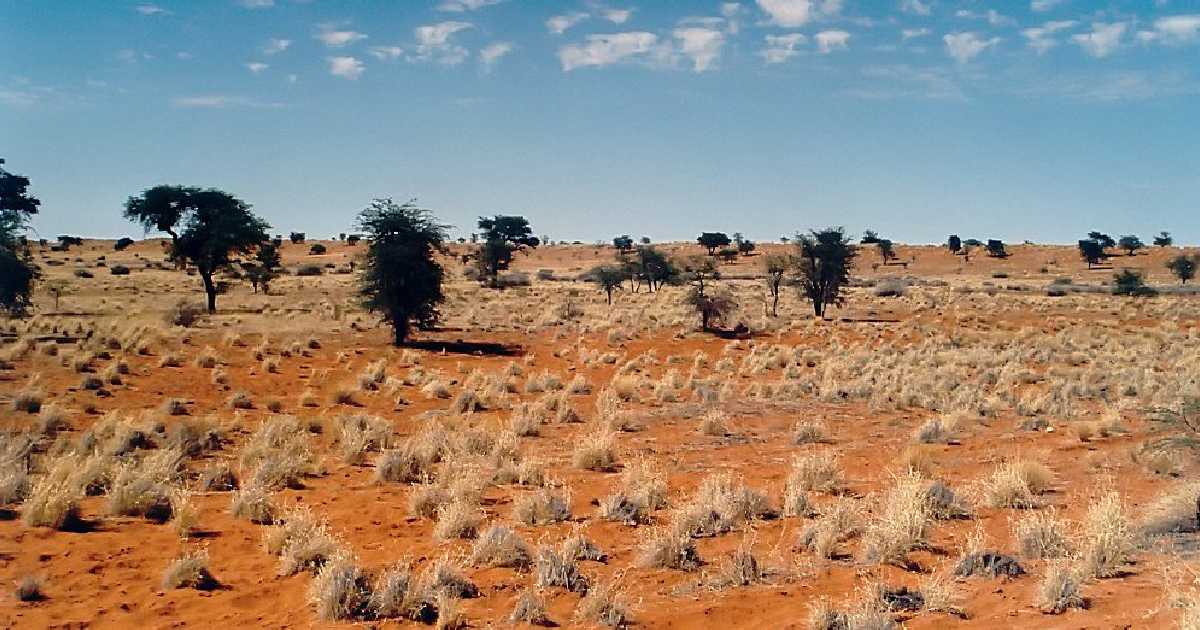
- Location: Southwestern Africa, including Botswana, Namibia, and South Africa
- Area Size: 360,000 square miles
Occupying 360,000 square miles in southwestern Africa, the Kalahari Desert stretches across several countries, including Botswana, Namibia, and South Africa. Unlike many other deserts, the Kalahari supports a relatively rich diversity of life. Its semi-arid sandy savanna is home to numerous plants and animals, making it more of a “fertile” desert, thanks to its brief rainy season each year.
The Kalahari supports more animal and plant life than a typical desert due to its unusual precipitation patterns. Unlike most deserts, which have less than 250 mm of rain annually, the Kalahari receives up to 500 mm, allowing for more diverse flora and fauna to thrive. The presence of vegetation stabilizes the soil and reduces erosion, which helps retain more surface water.
5. Gobi Desert – Asia’s Cold Desert
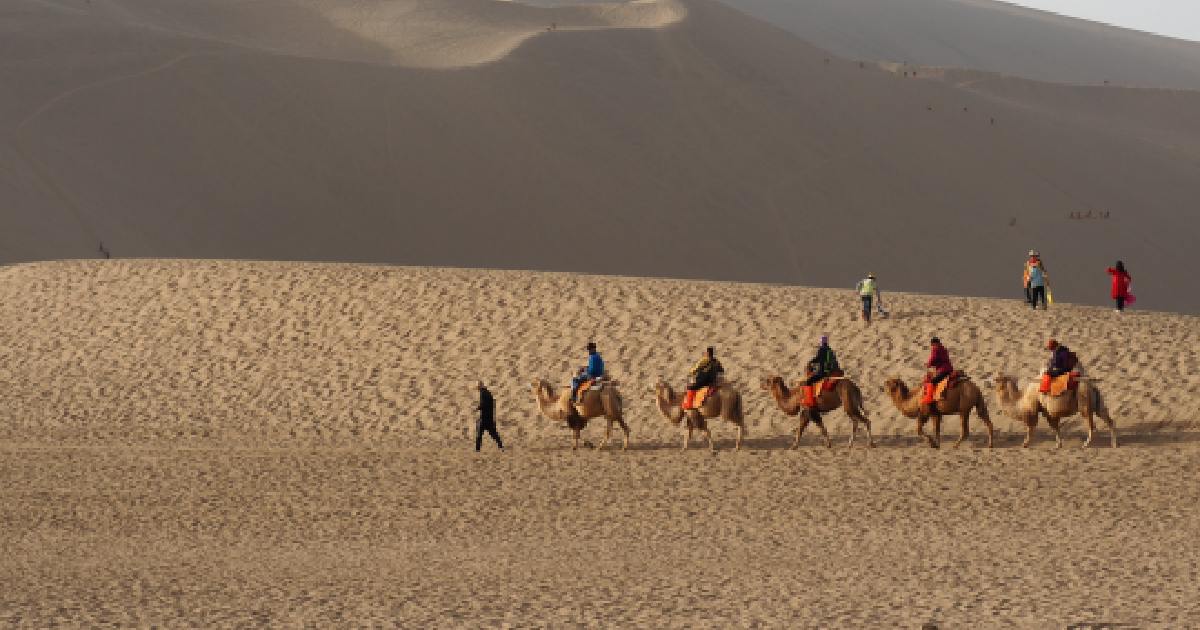
- Location: Mongolia and Northeastern China
- Area Size: 500,000 square miles
The Gobi Desert, covering 500,000 square miles across Mongolia and northeastern China, challenges the common perceptions of a desert. Unlike the Sahara or Arabian deserts, the Gobi is a cold desert, with snow occasionally dusting its dunes. The climate here swings between extremes, with temperatures soaring in summer and plunging in winter, which influences the unique flora and fauna adapted to these conditions.
The Gobi Desert’s temperature extremes are due to its continental position, far from any moderating oceanic influences, and its altitude, which varies significantly across the region. This elevation makes the Gobi one of the world’s colder deserts, with winter temperatures that can drop below -40 degrees Fahrenheit.
4. Arabian Desert – The Heart of the Middle East

- Location: Southwestern Asia, encompassing most of the Arabian Peninsula
- Area Size: 900,000 square miles
Spanning 900,000 square miles of southwestern Asia, the Arabian Desert encompasses most of the Arabian Peninsula. It features classic desert vistas, including rolling sand dunes and rocky valleys. This subtropical desert is home to the Empty Quarter, one of the largest continuous sand deserts in the world, and is known for its extreme temperatures and scarce water sources.
The Arabian Desert experiences some of the most extreme temperature fluctuations on Earth, due to its clear skies and dry air allowing for rapid heating during the day and cooling at night. The desert is also a prime example of a rain shadow effect, where nearby mountain ranges block the passage of rain-producing weather systems, enhancing aridity.
3. Sahara Desert – The Classic Desert Landscape
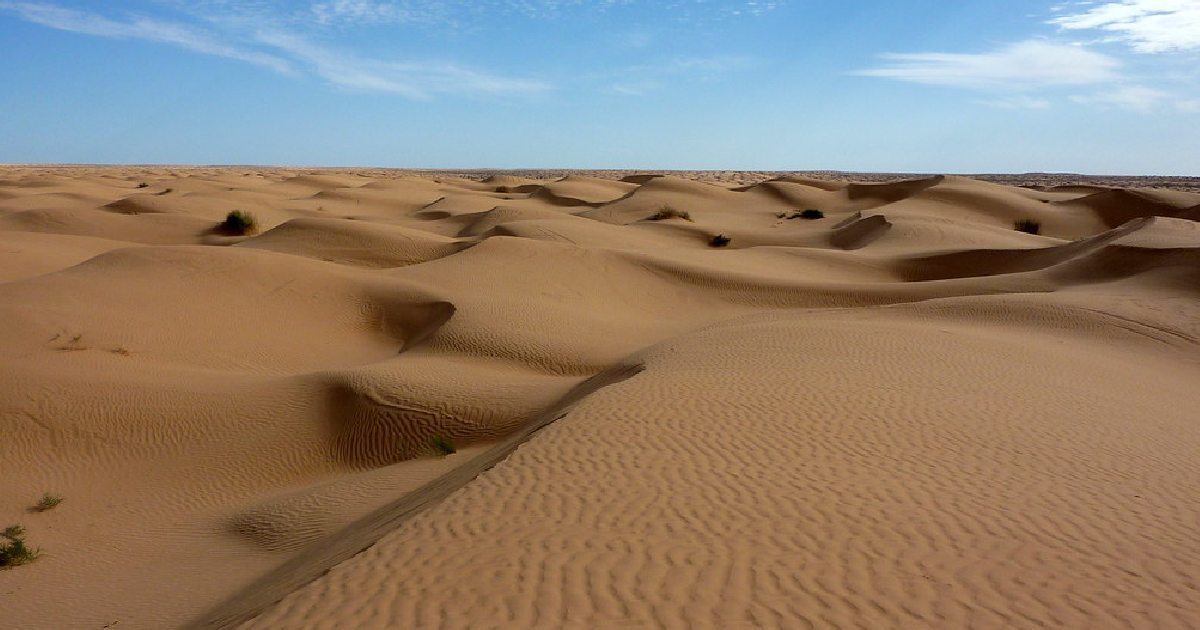
- Location: Northern Africa
- Area Size: 3,320,000 square miles
The Sahara Desert, often synonymous with the term “desert,” is the third largest and the largest hot desert in the world, with an area of 3,320,000 square miles across northern Africa. It’s a subtropical desert, known for its vast sand dunes, rocky plateaus, and some of the hottest temperatures recorded on the planet. The Sahara is not just barren sand; it’s a dynamic environment where you can find oases, mountain ranges, and ancient river beds that hint at the desert’s wetter past.
The Sahara’s climate is governed by the Hadley Cell, an atmospheric circulation pattern that creates dry conditions at approximately 30 degrees north and south of the equator. Historically, the Sahara has experienced shifts between desert and savannah grassland, heavily influenced by the Earth’s orbital variations, known as Milankovitch cycles, which affect solar radiation received at the surface.
2. Arctic Polar Desert – The Northern Wilderness
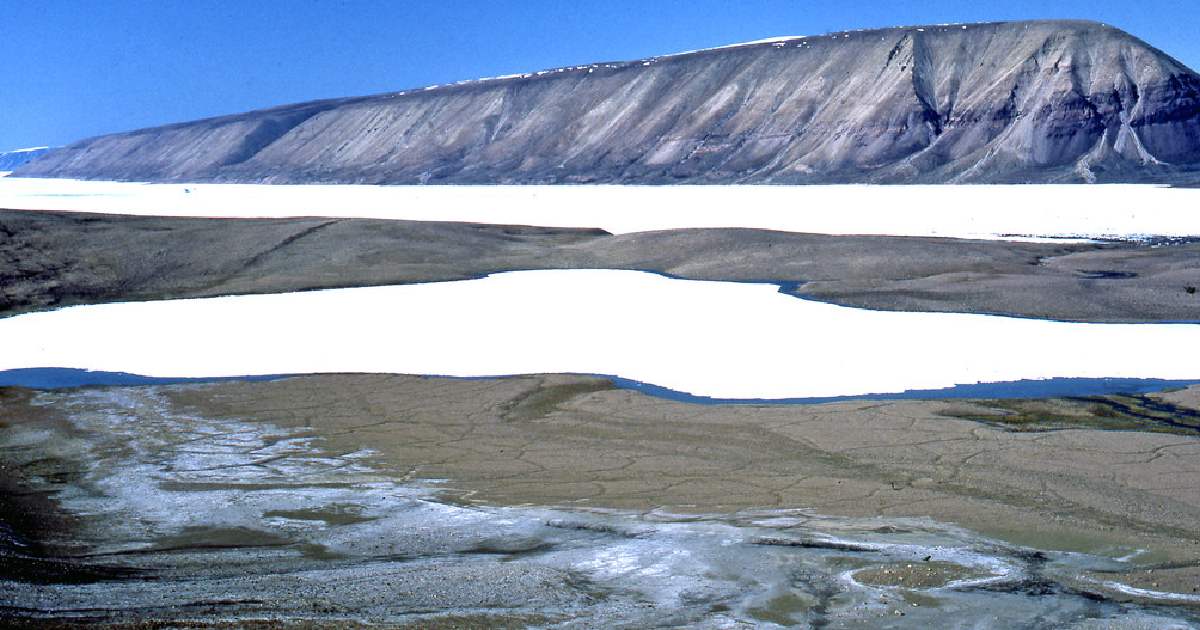
- Location: Arctic Ocean, Greenland, and parts of northernmost North America and Eurasia
- Area Size: 5,300,000 square miles
Encircling the top of the world, the Arctic Desert covers 5,300,000 square miles across the Arctic Ocean, Greenland, and parts of northernmost North America and Eurasia. This polar desert is characterized by its frigid temperatures and sparse precipitation, making it one of the least hospitable places on Earth. Despite its harsh conditions, it supports a variety of wildlife adapted to the cold, including polar bears and Arctic foxes.
The Arctic Desert’s unique position within the Arctic Circle leads to phenomena such as polar day and polar night, greatly influencing its climate. The permafrost underlying much of the Arctic landscape stores vast amounts of methane, a potent greenhouse gas. As global temperatures rise, the potential thawing of this permafrost poses significant concerns for further climate change impacts.
1. Antarctic Polar Desert – The Cold, White Expanse
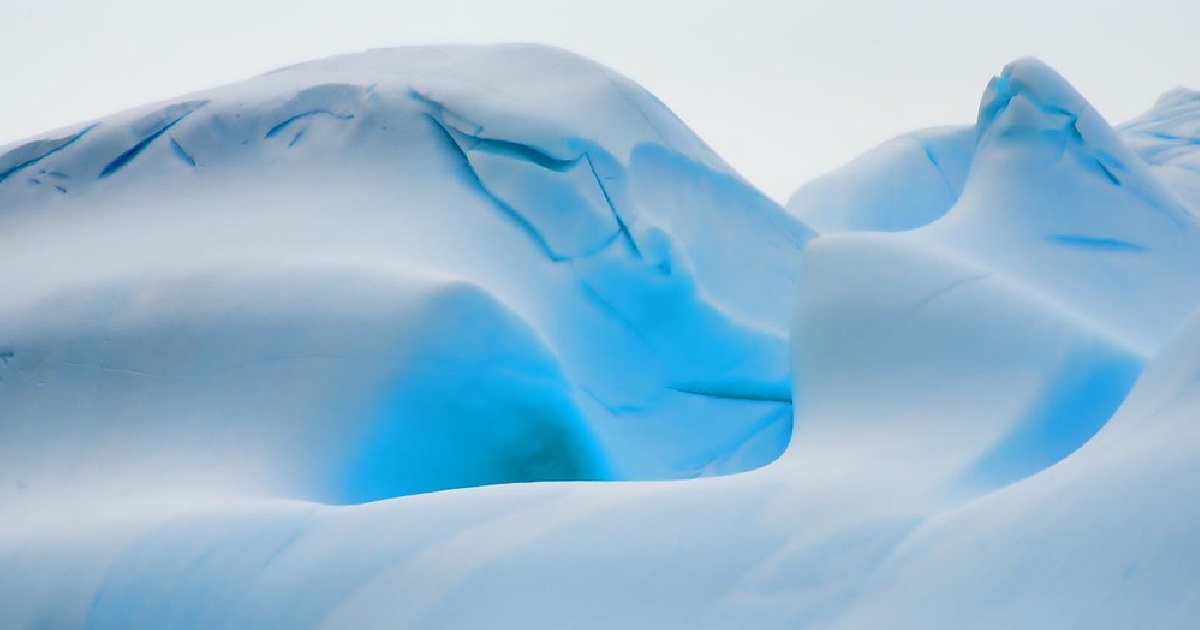
- Location: Antarctica
- Area Size: 5,390,000 square miles
At the very bottom of the world lies the Antarctic Polar Desert, covering an astonishing 5,390,000 square miles. Unlike the stereotypical image of a desert, this one is intensely cold, with ice stretching as far as the eye can see. This polar desert is not just the largest desert in the world; it’s also one of the most extreme environments on Earth, with temperatures that can plummet to minus 128.6 degrees Fahrenheit. The Antarctic Polar Desert’s vast ice sheets play a crucial role in the Earth’s climate, reflecting sunlight and regulating temperature.
In addition to being the largest desert, the Antarctic Polar Desert also plays a critical role in Earth’s climate system. The white surface reflects a significant amount of solar radiation back into space, a phenomenon known as the albedo effect. This helps regulate global temperatures. Moreover, the Antarctic ice core samples provide scientists with valuable data on historical climate conditions, offering insights into how our climate has changed over millennia.
Conclusion
These deserts, whether icy wastes or sand-swept landscapes are more than just barren wilderness. They are crucial to our global ecosystem, influencing weather patterns and housing unique species. The “largest deserts in the world” are not just places of isolation; they are vital parts of the Earth’s environmental puzzle, each telling a story of survival and adaptation in extreme conditions. Whether it’s the icy expanses of the polar deserts or the searing heat of subtropical deserts, these vast, arid places challenge the resilience of life and beckon us to explore and appreciate their stark, rugged beauty.
Frequently Asked Questions (FAQs)
Which are the 10 largest deserts in the world?
The ten largest deserts in the world, ranked by size, include the Antarctic Ice Sheet, the Arctic Desert, the Sahara Desert, the Arabian Desert, the Gobi Desert, the Kalahari Desert, the Patagonian Desert, the Rubʿ al-Khali (Empty Quarter), the Great Victoria Desert, and the Great Basin Desert. These vast regions vary from icy polar areas to arid subtropical zones, each presenting unique ecological systems. Their immense sizes and diverse climates play significant roles in Earth’s environmental dynamics.
Is the Sahara Desert the largest desert in the world?
No, the Sahara Desert is not the largest desert in the world; it ranks third. The largest desert is the Antarctic Ice Sheet, and the second largest is the Arctic Desert. However, the Sahara holds the title of the largest hot desert in the world, known for its vast sand dunes and extreme heat.
What is the 3rd largest desert in the world?
The third largest desert in the world is the Sahara Desert, situated in northern Africa. It covers an area of about 3,320,000 square miles, making it the largest hot desert. This desert is distinguished by its extensive sand dunes, minimal rainfall, and some of the most extreme temperatures on the planet.
What is the biggest desert in the world?
The biggest desert in the world is the Antarctic Ice Sheet, which spans approximately 5,390,000 square miles. This colossal desert covers the majority of the continent of Antarctica and is characterized by its extremely cold and ice-covered landscape. The Antarctic desert is crucial for global climate regulation, thanks to its significant albedo effect which reflects solar radiation back into space.
What is the largest desert in Asia?
The largest desert in Asia is the Arabian Desert, which extends across most of the Arabian Peninsula, covering about 900,000 square miles. This vast subtropical desert features an array of landscapes, including sand dunes, gravel plains, and rocky plateaus. The extreme conditions, marked by high temperatures and scarce rainfall, make it one of the most inhospitable environments on the continent.

